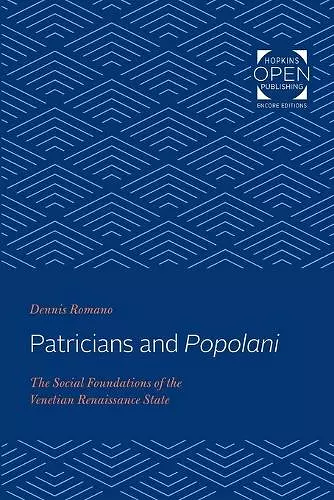Patricians and Popolani
The Social Foundations of the Venetian Renaissance State
Format:Paperback
Publisher:Johns Hopkins University Press
Published:14th Apr '20
Currently unavailable, and unfortunately no date known when it will be back

Originally published in 1987. Since Machiavelli, historians and political theorists have sought the sources of the stability that earned for Venice the appellation La Serenissima, the Most Serene Republic. In Patricians and Popolani, Dennis Romano looks to the private lives of early Renaissance Venetians for an explanation.
Fourteenth-century Venice escaped the tumultuous upheavals of the other Italian city-republics, Romano contends, because the patricians and common people of the city did not divide sharply along class or factional lines in their personal associations. Rather, Venetians of the era moved in a variety of intersecting social networks that were shaped and influenced by an overriding sense of civic community. Drawing on the private archives of Venice—notarial registers, collections of testaments, and records of estates maintained by the procurators of San Marco—Romano analyzes the primary social bonds in the lives of the city's inhabitants.
In separate chapters, Patricians and Popolani examines the forms of association in everyday Venetian life: marriage and family structure; artisan workshops and relations among tradesmen; the role of the parish clergy and the "sacred networks" that formed around convents, hospitals, and confraternities; and neighborhood and patron–client ties. By the beginning of the fifteenth century, Romano argues, all these networks of association had been transformed as a new hierarchical spirit took hold and overwhelmed the older, more freewheeling tendencies of Venetian society. The old sense of community yielded to a new and equally compelling sense of place, and La Serenissima remained stable throughout the later Renaissance.
Dennis Romano demonstrates in a well-researched and extremely readable book how everything came to be in its place in an overall scheme which put the lunghi at the top and the populo at the bottom, all united by the concept of being citizens of La Serenissima, Venice.
—Bibliotheque d'Humanisme et Renaissance
ISBN: 9781421431451
Dimensions: unknown
Weight: 336g
242 pages